Martin Robinson, CMRP, IEng.
IRISS Inc.
4914 Lena Road, Suite 105Bradenton, FL 34211Ph: 941-907-9128www.iriss.com

Electrical accidents happen daily; however, there are ways companies and individuals can reduce the occurrence of these accidents and protect everybody concerned from the physical, financial, and statutory consequences. The National Fire Protection Association (NFPA) Standard 70E provides a reference for facilities to meet the requirements of electrical workplace safety, while Recommended Practice 70B outlines the best practices for setting up and maintaining an Electrical Preventive Maintenance (EPM) program.
A crucial electrical safety element is ensuring that the equipment is safe before any work commences. NFPA 70E provides best practices for electrical safety and these recommendations are used by governmental enforcement agencies such as OSHA, municipal building inspectors, and even insurance companies as the basis for mandates placed on corporations and individuals globally.
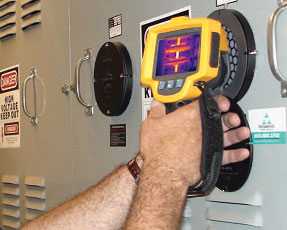
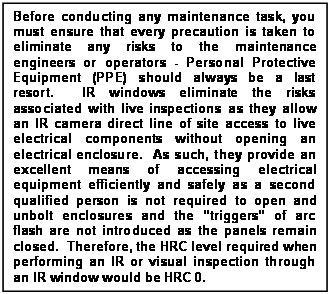 NFPA, established in 1896, is a global advocate of fire prevention. The influence of its 300 codes and standards are evident in buildings, products, and practices throughout the world. Consequently, NFPA codes are referenced by a broad consensus of experts. NFPA 70, also known as National Electric Code (NEC), is the standard for electrical design, installation and inspection. It does not specifically address electrical maintenance or safe work practices. For the consensus standards on these topics, we turn to NFPA 70B and NFPA 70E.
NFPA, established in 1896, is a global advocate of fire prevention. The influence of its 300 codes and standards are evident in buildings, products, and practices throughout the world. Consequently, NFPA codes are referenced by a broad consensus of experts. NFPA 70, also known as National Electric Code (NEC), is the standard for electrical design, installation and inspection. It does not specifically address electrical maintenance or safe work practices. For the consensus standards on these topics, we turn to NFPA 70B and NFPA 70E.
Electrical power is the lifeblood of our everyday needs. Dependable electrical distribution is not an option – it is essential to corporate economic health; therefore, you need to ask the question “Is your electrical maintenance program an overhead or an asset?” What would be the consequences to your company if you lost electrical power? What would be the cost if any of the following occurred?
An unannounced disruption of your operations; what happens when the lights go out?
Fire damage to critical equipment; how long to repair?
Injury or death of personnel?
Negative impact to environment and community?
Damaged customer loyalty and satisfaction due to late delivery of service or products?
 If your electrical maintenance program alleviates any of the consequences listed above, then it must be an asset. As an asset, investment in an EPM needs careful planning and implementation. Information and guidelines contained within NFPA 70E and 70B Can help you to get it right.
If your electrical maintenance program alleviates any of the consequences listed above, then it must be an asset. As an asset, investment in an EPM needs careful planning and implementation. Information and guidelines contained within NFPA 70E and 70B Can help you to get it right.
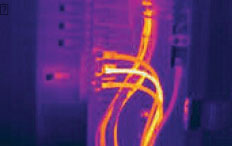 NFPA 70B is a standard for implementing an effective Electrical Preventive Maintenance (EPM) program designed to reduce hazard to life and property resulting from the failure or malfunction of electrical systems and equipment. A well-administered EPM program reduces accidents, saves lives, and minimizes costly breakdowns and unplanned shutdowns of equipment. Without an EPM program, management assumes an increased risk of serious electrical failure and its consequences.
NFPA 70B is a standard for implementing an effective Electrical Preventive Maintenance (EPM) program designed to reduce hazard to life and property resulting from the failure or malfunction of electrical systems and equipment. A well-administered EPM program reduces accidents, saves lives, and minimizes costly breakdowns and unplanned shutdowns of equipment. Without an EPM program, management assumes an increased risk of serious electrical failure and its consequences.
70B outlines the benefits of an EPM program:
Asset protection: Equipment lasts longer and performs better
Risk management: Protect against accidents, lost production, and loss of profit
Energy conservation: Maintained equipment operates more efficiently and utilizes less energy
Uptime and profitability increased: Reduced interruption of production, better workmanship, and increased productivity
Improved employee morale and reduced absenteeism
Insurance costs reduction: Due to the alternative high cost of inadequate maintenance
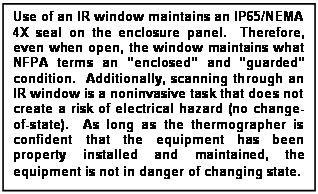 NFPA regards systematic and regular thermographic or infrared (IR) electrical inspections to be a critical component of an EPM program, proclaiming these inspections have uncovered a multitude of potentially dangerous situations. Proper diagnosis and resolution of the situations have prevented numerous losses.
NFPA regards systematic and regular thermographic or infrared (IR) electrical inspections to be a critical component of an EPM program, proclaiming these inspections have uncovered a multitude of potentially dangerous situations. Proper diagnosis and resolution of the situations have prevented numerous losses.
70B is also specific about performing inspections while equipment is operating, stating IR surveys should be performed during periods of maximum possible loading but not less than 40 percent of rated load of the electrical equipment being inspected. In instances where IR windows are not available, equipment should be opened for inspection. When opening electrical panels to perform thermographic inspections per NFPA 70B guidelines and insurance requirements, they increase the risk of arc flash triggers. NFPA 70E rates the removal of bolted panels on energized electrical equipment to be in the highest hazard/risk category.
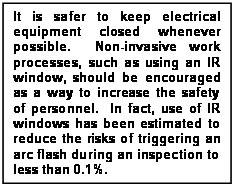 Originally chartered in 1976 and released in 1979, the 70E Standard is intended for use by employers, employees, and OSHA to set standards for evaluating electrical safety in the workplace. Through eight revisions over 30 years, the NFPA 70E Standard has made an indelible mark on safe work practices globally.
Originally chartered in 1976 and released in 1979, the 70E Standard is intended for use by employers, employees, and OSHA to set standards for evaluating electrical safety in the workplace. Through eight revisions over 30 years, the NFPA 70E Standard has made an indelible mark on safe work practices globally.
Basic compliance with the 2012 edition of NFPA 70E is actually established with a five-step process, which includes an arc flash analysis. The five steps are:
Develop and audit on a regularly scheduled basis an electrical safe work practice policy
Conduct an electrical system study to determine the present degree of arc flash hazards and apply associated equipment labeling
Ensure adequate supplies of personal protective equipment (PPE) and proper tools for electrical workers
Conduct regularly scheduled safety training and audits for all electrical workers
Maintain all electrical distribution system equipment and components per manufacturers’ recommendations
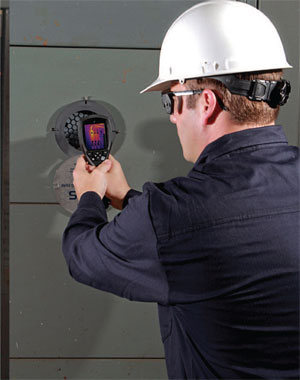
At the heart of NFPA 70E and OSHA initiatives is the hierarchy of control (HRC). This attempts to mitigate risk wherever possible. In order of preference, the HRC prioritizes:
Risk Elimination
Substitution (with lower risk)
Engineering Controls (such as arc resistant switchgear)
Safe Work Practices
PPE
In short, the best way to reduce risk is to eliminate it. This is why NFPA 70E and OSHA state that electrical equipment should be de-energized prior to opening. Realizing this is not always possible for troubleshooting or in situations where shutting down is not viable or poses a risk, there is an allowance made for PPE to be used as a last resort – similar to the least preferred method in the hierarchy of control.
The Occupational Health and Safety Administration (OSHA) enforces electrical safety regulations in the United States. Although OSHA has not adopted and does not mandate NFPA 70E compliance, you can be cited for non-compliance. If you wonder how this could be possible, remember that OSHA’s authority stems from the Occupational Safety and Health Act; in particular Section 5(a)(1) and 29 CFR 1910.2(g).
Section 5(a)(1) “General Duty Clause” states that employers “shall furnish to each of his employees employment and a place of employment which are free from recognized hazards that are causing or are likely to cause death or serious physical harm to his employees”. This is the clause most cited by OSHA where unsafe work conditions are found to exist.
Section 29 CFR 1910.2(g) “National Consensus Standard” means any standard or modification which has been adopted and promulgated by a nationally recognized standards-producing organization under procedures whereby it can be determined that persons interested and affected by the scope or provisions of the standard have reached substantial agreement on its adoption”. NFPA 70E is a national consensus standard and as such, non-compliance leaves employers open for citation under this clause if they are non-compliant.
Implementing the requirements outlined in NFPA standards gives companies a solid foundation to build a safe and effective electrical preventive maintenance program improving their electrical safety records, the benefits of which will show reduced medical incident rates, workers compensation costs, and other indirect costs resulting from electrical accidents.
Complying with the NFPA standard practices and utilizing technologies such as IR windows allows companies to really show how much they value their workforce by maintaining a safe working environment. This has additional spin-offs in increased employee morale and reduced absenteeism, by providing the tools, training and maintenance programs to reduce the chances of injury in their workplace.
About the Author
For over 30 years, Martin Robinson has been a pioneer in the field of maintenance technology. Robinson, an innovator and pioneer of infrared (IR) thermography, has consulted with international maintenance and reliability leaders on electrical preventive maintenance and electrical safety standards of NFPA and OSHA. A recognized authority in the field of IR Thermography, Robinson has designed CBM programs to include IR, Non-destructive Testing (NDT) and implementation of green energy initiatives and energy management strategies. He is a Level III Certified IR Thermographer, Certified Maintenance and Reliability Professional (CMRP) through the Society for Maintenance and Reliability Professionals (SMRP), member of IEEE, NFPA, and is a standing member on the technical committee CSA Z463 guidelines on maintenance of electrical systems and IEEE P1814 – Electrical System Design to Improve Electrical Safety.
Advertisement